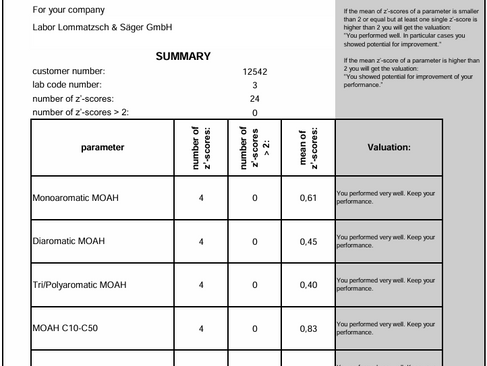Determination of MOAH by number of aromatic rings (ring trial results)
- martin77491
- Apr 2
- 2 min read
With the interlaboratory comparison RVEP 243180, the accredited institution Deutsches Referenzbüro für Ringversuche und Referenzmaterialien (DRRR) carried out a comparative study for the quantification of aromatic hydrocarbons (MOAH) according to the number of aromatic rings (mono-, di-, tri- and polyaromatics). Comprehensive gas chromatography (GCxGC-MS/FID) is the state-of-the-art method for this characterisation. In addition to the aromatic hydrocarbons, further parameters were analysed, including total MOAH, total MOSH, the corresponding parameters MOSH C10-C50 and MOAH C10-C50 determined using the HPLC-GC-FID basic method as well as potential synthetic (POSH, PAO) or biogenic hydrocarbons (terpenes).
Medium-chain triglycerides and rapeseed oil spiked with mineral oil were used as sample materials. The spiking of the samples was carefully considered by the laboratory comparison organiser to ensure that the MOAHs in particular, which are of concern from a health perspective, were added in quantities close to those found in practice (e.g. mono-aromatics approx. 2 ppm, di-aromatics approx. 3 ppm, tri- and polyaromatics approx. 3 ppm).
Laboratory Lommatzsch and Säger successfully completed the laboratory comparison with an excellent performance. All of the results submitted were well within the acceptance criteria, according to which a result may not deviate from the assigned value by more than two standard deviations (|z-score| ≤ 2). A total of 11 laboratories took part in the interlaboratory comparison, with one laboratory reporting no values and another laboratory reporting only HPLC-GC-FID results. Besides Laboratory Lommatzsch and Säger, only two other laboratories were able to provide accurate results for all parameters.
As a result, we were pleased to once again demonstrate our expertise in the reliable and competent determination and characterisation of (mineral oil) hydrocarbons using HPLC-GC-FID and, in particular, GCxGC-(MS)/FID.










